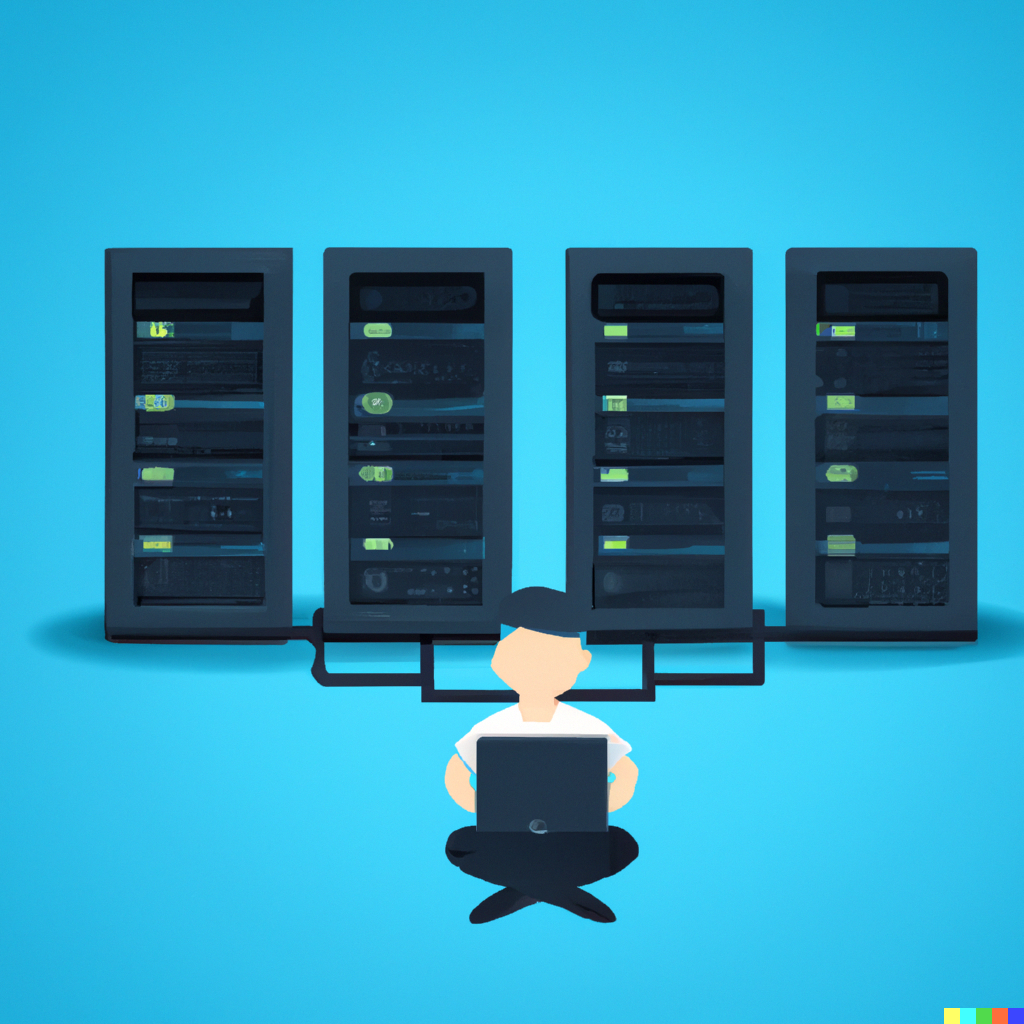Overview
With soaring inflation and an uncertain recessionary environment, companies are shifting their focus to reducing costs. Concerns related to AI and ML budgets are no exception, especially since inference can account for up to 90% of total compute costs. For plenty of companies that we've spoken with, these compute costs play a huge factor in how they choose to balance their models latency and accuracy.
Helping enterprises reduce compute costs is the reason we built our AI Acceleration platform. We exist to accelerate deployed ML pipelines while reducing AI costs for companies. In doing so, we help enterprises enable their AI products by reducing latency and maximizing their inference capacity.
Note: All photos used in this blog article have been generated with text-to-image using OpenAI's DALL-E
Developing NLP Products is Difficult
There are a plethora of NLP-based products that handle a variety of tasks. However, for many NLP-based products, the process of model deployment is expensive and time consuming. A typical process of deploying a ML model requires months of intense deep learning engineering:
Model selection
Optimal hardware exploration
Fine-tuning
Containerization
End-to-end tests
Price-performance evaluations
Deployment to production
Not every engineering team has the resources, budget, or time to dedicate hundreds of engineering hours to implement these ML models. So, many companies are forced to settle for a less-than-optimal product. Fortunately, deploying the best ML models doesn't have to be this hard.
 Deploying models is hard. It doesn't have to be this way.
Deploying models is hard. It doesn't have to be this way.Enabling Your NLP Products with Stochastic
Our platform was designed to automatically integrate the entire deep learning pipeline from model fine-tuning to deployment in just a few minutes. With Stochastic, you can enable all types of NLP products through our artificial intelligence acceleration platform for less than 80% of the original cost.
Our platform supports the development of models used in all types of NLP applications:
Text classification
Text generation
Translation
Image classification
Summarization
Token classification
Text Classification
Text classification provides one of the key methods to identify and classify unstructured data. Harnessing the capabilities of unstructured data is critical because approximately 80%-90% of all data is unstructured. With text classification, companies can automatically structure all forms of related text from different sources in ways that are more easily usable.
Text classification products are so great because of their incredible scalability, real-time feedback, and consistency. As a result, text classification allows companies to derive key insights, make optimal data-driven business decisions, and automate critical tasks to save more time. One of the great things about text classification is how simple it is to train a model and deploy it.
Overall, the entire process of building your own text classification model is relatively straightforward:
Find a small, clean dataset
Find a model online and fine-tune it to the dataset
A Clean Dataset
A clean and large datasets are not easy to come across but Transformer-based pre-trained models only require a small dataset to start performing well on classification task. The dataset ideally has a label associated to each of the words, so when feeding the data into a model, the model can associate the classification type for each of the listed words.
A Machine Learning Model
Once this data is collected, it must be fed into a machine learning algorithm and fine-tuned. The outcome of training this algorithm will be for the machine to easily classify texts for a specific use case. Feeding data into such an algorithm typically involves the use of an open-source r.w. model available online.
Accessing these models is very easy, and can be done online through providers like Hugging Face. Once you’ve collected your preferred model, you have to fine-tune the model on a specific dataset of choice and then deploy it into production.
For a simple task like text classification, Stochastic can easily automate the entire text classification process for you with just a few lines of code. While text classification is one of the simpler use cases for NLP, Stochastic enables even more complex NLP products like text generation.
Text Generation
Text generation focuses on generating new text based on a pre-existing, but incomplete context. The use cases for text generation are quite diverse, ranging from predicting the next word or phrase after an incomplete set of words to even telling a story.
The process for building a text generation NLP-based product is similar to the process for text classification, but with more need for refinement in the deployment process. In order to build a text generation process, you need a dataset with little bias and a strong ML algorithm. Again, you can collect such data on your own, or you can find datasets online. Similarly, you can find an open-sourced machine learning model online through a service like Hugging Face. Once you’ve gathered your data and models, you will have to fine-tune the model using the dataset you’ve prepared.
Once you’ve fine-tuned the model, you have to deploy it into production. The process of deploying the text generation model is often difficult due to a few limitations:
Cost:
Higher levels of inference accuracy require more compute power, so it becomes expensive to run high-end machine learning models on hardware without optimization techniques. Many attempt to reduce costs by experimenting with the models across a variety of compute options.
Latency:
Minimizing latency is key to great NLP products, but many organizations are faced with the tradeoff of minimizing latency while also maximizing accuracy. Optimizing accuracy while minimizing latency requires optimization, a manual and time-intensive technique that few ML engineers can do.
Lack of engineering resources:
It is difficult to find deep learning engineers with the right experience who can perform these optimizations well.
It can take a ML engineering team months to optimize across latency and cost factors for an NLP model to service a product competitively. The incredible costs and time required to optimize these models is exactly why many companies choose Stochastic’s AI acceleration platform to automatically deploy their models for them.
It’s easy to deploy models with Stochastic: with a few clicks on our platform, you can effortlessly optimize your models and deploy them into production. By using Stochastic, you save yourself from having to experiment endlessly for the cheapest compute options and the best model optimization.
Conclusion
Enabling NLP products requires the right deep learning expertise since they demand a high level of machine learning engineering competence. Stochastic’s AI Acceleration platform provides support for the entire NLP model from beginning to end, giving you the edge you need in automatically accelerating your NLP products.
 That was easy.
That was easy.Access our product here: app.stochastic.ai/signup.
